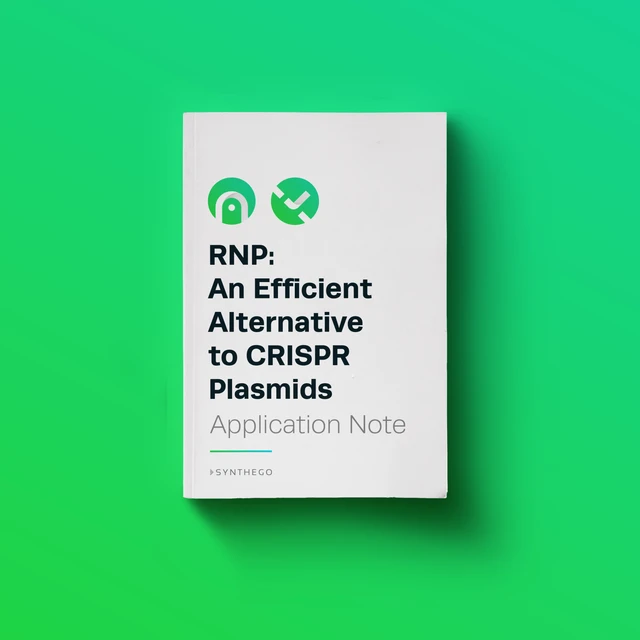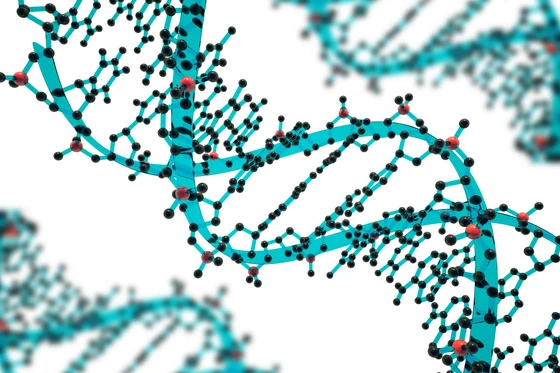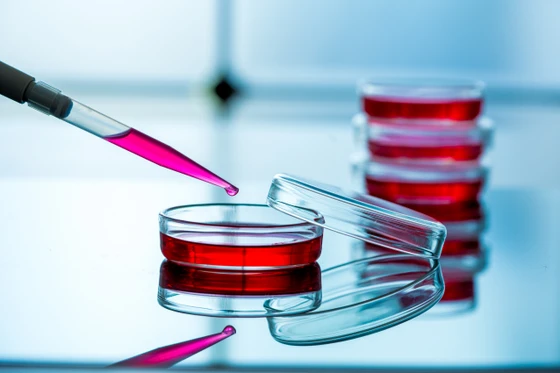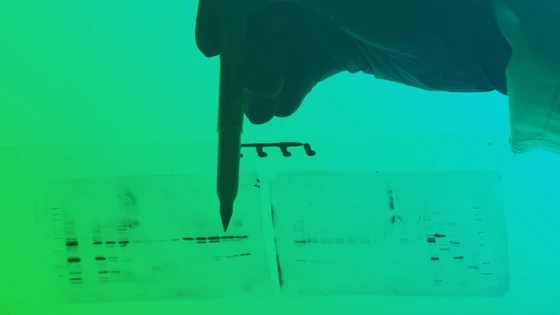Contents
CRISPR-Cas9 has opened the door to new and exciting possibilities in genome engineering. Scientists can now use this relatively simple molecular tool to make virtually any edit in any genome. The CRISPR-Cas9 complex consists of a programmable guide RNA (gRNA) and a Cas9 nuclease. These components unite to form a ribonucleoprotein (RNP) complex, which then binds to and cleaves the targeted site. The cell’s repair mechanisms can then be co-opted to edit the genome.
In the past few years, an increasing number of researchers have become interested in using CRISPR-Cas9 to advance their research. Researchers worldwide have already made several significant impacts in a variety of areas, including medicine, agriculture, and disease control.
The format of the gRNA and Cas9 is a significant factor to think about when designing a CRISPR experiment. For transient transfections (in which the components are present in cells temporarily), each of gRNA and Cas9 can be delivered as plasmid DNA, RNA, or pre-complexed RNPs. Many researchers choose plasmids given that they are inexpensive, easy to work with, and can include selectable markers. However, there are also several problems associated with expressing gRNA and Cas9 as plasmids.
In this article, we will outline a few notable pitfalls of using CRISPR plasmids and discuss why transfecting with RNPs often leads to more favorable results.
High-Quality SpCas9 sgRNA
For optimal performance, complex our SpCas9 nuclease with our high-quality research-grade synthetic sgRNA to achieve your highest editing efficiencies needed for your research and early therapeutic development.
RNPs Reduce the Total Experimental Time
Plasmid-based CRISPR transfection requires multiple steps for the guide preparation and is more labor-intensive compared to RNP workflows. In a comparative analysis performed with immortalized cell lines using Synthego’s synthetic sgRNA RNPs versus plasmids, our scientists found that transfection with RNPs reduced the overall experimental duration by 50%. This included the time involved in sorting cells tagged with fluorescent protein as a positive selection marker.
For reviewing more plasmid vs RNP experimental data, download the application note below.
RNP: An Efficient Alternative to CRISPR Plasmids
Plasmids and ribonucleoprotein (RNP) complexes comprising synthetic single guide RNA (sgRNA) and Cas9 are the most common CRISPR editing formats. This application note compares the RNP and plasmid workflows and demonstrates that RNPs offer faster, precise, less cytotoxic, and more efficient editing than CRISPR plasmids.

CRISPR Plasmid Transfection Increases Off-target Effects
One of the most concerning aspects of any CRISPR experiment is the risk of non-specific editing of the genome. Although well-designed guides will target the correct DNA location most of the time, they may also bind to sequences that differ by only a few nucleotides. These off-target effects are problematic because unintended editing of the genome can alter phenotypes or have harmful effects on the target cell or organism.
The introduction of CRISPR components as plasmids is often associated with high levels of unintended edits. This editing is due to the relatively long time that plasmids persist inside cells, which may last up to several weeks. Because plasmids hang around for so long, a lot of gRNA and Cas9 are expressed, consequently increasing the opportunities for erroneous editing.
Several studies have demonstrated that the frequency of off-target mutations is lower when CRISPR components are delivered as pre-complexed RNPs rather than plasmid DNA (Liang et al. 2015, Kim et al. 2014). For instance, Liang et al. (2015) found that for the gene OT3-18, the ratio of off-target to on-target mutations was 28-fold lower when using RNPs relative to plasmid DNA. The relatively lower incidence of off-targets with RNP use is likely linked to the limited time that RNPs are active inside the cell. Unlike plasmids, RNPs cleave genomic DNA rapidly after transfection and persist in cells for only about a day before being degraded (Kim et al. 2014). This shorter shelf-life ensures fewer unintended cuts to the genome and minimizes off-target effects.
Plasmid DNA May Integrate into Host Genome
Another potential problem with plasmid transfection is the random integration of all or part of the plasmid DNA into the genome of target cells. Researchers found a prevalence of plasmid-derived insertions at on- and off-target sites. Unlike insertions at on-target sites that can be readily detected via sequencing, insertions at off-target sites are difficult to ascertain. Transfection using RNPs avoids the risk of DNA integration altogether.
RNPs Are Less Toxic to Cells Than CRISPR Plasmids
One of the limitations of using plasmids as the CRISPR cargo is that DNA transfection is often stressful to cells. The cytotoxicity could be both due to transfection reagents and the plasmids. Many chemical transfection methods are detrimental to cell viability and may not be optimal for all cell types.
More recently there have been immense improvements in the transfection reagents and delivery vehicles to ensure better cell viability, as well as, efficacy and safety. (Yu et al. 2015, Givens et al. 2019).
In our experiments using Synthego’s synthetic sgRNA RNP versus plasmid-based transient transfection, we found that plasmids reduced cell viability significantly.
Our data suggest that plasmid dosage correlates inversely with cell viability, meaning more severe cytotoxicity with higher plasmid concentrations (Figure 2).
It is important to note that low plasmid concentrations also offer relatively low editing efficiencies. RNPs, on the other hand, are notably less cytotoxic while providing highly efficient edits. (For more details on the data comparing the editing efficiencies for RNPs versus CRISPR plasmids, please download our application note).
Furthermore, the presence of foreign DNA may trigger cyclic GMP-AMP synthase activation in primary human cells and pluripotent cells. For such specialized cell types, transfection using an RNP format rather than plasmids is likely to have much lower toxicity. According to (Kim et al. 2014), transfection with RNPs has resulted in at least 2x more viable colonies relative to plasmid transfection in embryonic stem cells.
Check out this video for CRISPR RNP electroporation protocols in a variety of cells and whole organism models.
Plasmids Demonstrate Variable CRISPR Editing Efficiencies
Plasmids may also have a quality problem. When CRISPR components are transfected as plasmid DNA, transcription (of gRNA and Cas9) and translation (of Cas9) need to occur within the cell before any genome editing occurs. Not only does this extend experimental timelines, but it also risks discrepancies in gRNA expression or the assembly and folding of Cas9. Working with RNPs, on the other hand, avoids these issues because the sgRNA and protein components are made before transfection. The quality of the gRNA and Cas9 can be verified before they are introduced to cells.
Another benefit of the RNP format is that the gRNA is protected by Cas9 such that it is less prone to degradation. Furthermore, synthetically-made gRNA can be chemically modified to prevent endonuclease degradation and immune responses. Both of these factors enable the gRNA to target genomic DNA more efficiently during the short time it is active within the cell (Hendel & Bak et al. 2015).
Given the many benefits of RNPs, it is not surprising that they have consistently yielded high editing efficiencies across a variety of immortalized cells, primary cells, and stem cells (e.g., Hendel & Bak et al. 2015, Kim et al. 2014, Liang et al. 2015, Lin et al. 2014). “Knocking in” a genetic sequence via homology-directed repair, a notoriously inefficient process, also appears to be enhanced by the use of RNPs (Gaj et al. 2017, Lin et al. 2014, Schumann et al. 2015).
For reviewing experimental data showing the differences between plasmid and RNP editing efficiencies, download the application note below.
Is It Worth Switching to RNPs for CRISPR?
RNPs present a significantly better alternative over plasmids for transient transfection experiments, with high editing efficiency, fewer off-target effects, faster delivery, and notably reduced cytotoxicity. Note that plasmids may still be better suited for stable transfections that require prolonged CRISPR-Cas9 expression.
Budget is yet another consideration. Plasmids are cheap, yes. But is it worth potentially introducing more off-target edits? How about the potential for randomly integrating DNA into an essential gene?
Some consider the ability to add a selectable marker (such as an antibiotic gene) to plasmids as a benefit, as it enables one to enrich CRISPR transfected cells. However, because using RNPs often result in editing efficiencies of more than 70%, a selection agent may be unnecessary. Besides, adding the selection steps to the workflow means more time on the bench and other additional issues detailed in this blog post. When considering these factors, the benefits of switching to an RNP format may outweigh the costs.
Another option that allows scientists to skip all the hassle with plasmid transfection could be directly purchasing engineered cells edited with RNPs. Check out our online calculator to compare the estimated costs using plasmids versus engineered cells.
Ultimately, the choice of packaging format and delivery vehicles for CRISPR hinges on personal expertise and familiarity with the platforms, the cell or organism models used, and overall experimental design. Given the enormous benefits that RNPs provide, especially with transient transfection and the continued improvement of synthetic guides and customized cell editing, one can hope for increased adoption of RNPs in the near future.







